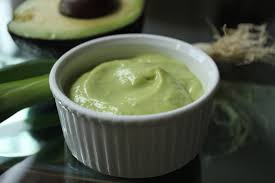By Bob McCauley, ND
The Structural Nature of Food – Part 3
“He who distinguishes the true savor of his food can never be a glutton; he who does not cannot be otherwise.” ~ Henry David Thoreau
Eating your way to health. Once the salad is ready, we should consume it as soon as possible. The fresher foods are, the more nutritious they are. Ideally, we should consume salads within 20 minutes of their being prepared. Foods that have been chopped or minced are exposed to oxidation, which destroys their nutrients in a way reminiscent of cooking, but at a considerably slower pace.
 Green Foundation. Instead of lettuce, I use greens as the base of my salad, such as kale, parsley, dandelion, spinach, endive, Swiss chard, watercress, radicchio, escarole, arugula, chervil, sorrel, mustard greens, bok choy, radish greens, chicory, mizuna, collards or rapini. You can also use the leaves from any vegetable such as broccoli, turnip, beets, cauliflower or brussel sprouts.
Green Foundation. Instead of lettuce, I use greens as the base of my salad, such as kale, parsley, dandelion, spinach, endive, Swiss chard, watercress, radicchio, escarole, arugula, chervil, sorrel, mustard greens, bok choy, radish greens, chicory, mizuna, collards or rapini. You can also use the leaves from any vegetable such as broccoli, turnip, beets, cauliflower or brussel sprouts.
I sometimes use sprouts such as lentils, mung beans, red clover or alfalfa for the base of my salad although I always make sure I have greens of some sort in the salad because chlorophyll is one the obligatory nutrients consistently needed in our diet to Achieve Great Health. The body requires chlorophyll perhaps more than any other nutrient. Of course you can make greens your entire salad, but when preparing a power salad your green foundation should consist of 40 — 50% of the total salad.
“Meat” of the Salad. The remainder of the salad is where the power and healing potential lies. I suggest you start by including the foods that you like, whatever they may be. My favorites are green onions, beets, radishes, cauliflower, broccoli, asparagus, red peppers and tomatoes, although there is not a vegetable or fruit I won’t put in my salads. Some foods such as avocado, hot peppers and garlic I religiously include in every salad I prepare. When I first tried eating fiery foods such as garlic, I added a few slivers to my salad and was amazed and pleased with myself that I had consumed it raw. Now I eat 3 or 4 cloves of garlic with each meal and think nothing of it. It is impossible to eat garlic by itself, but the fire of powerful foods such as these is subdued when they’re consumed with greens, avocado, olive oil and other neutralizing condiments.
Lasagna. Lasagna means layers in Italian and that is the way I build my salads, in layers of the various food groups. Fresh herbs are another favorite of mine that I add to most of my salads. Adding an herb like basil or mint will change the entire character of a salad. Some herbs are so potent they can overpower a salad so you can’t taste anything else. In general, I use herbs in moderation, but sometimes fresh herbs comprise as much as 50% of my salad, although that kind of strength takes some getting use to for most people. Sprouts such as fenugreek or broccoli have a distinctive flavor and can also radically change the entire character of a salad, so I use them in moderation as well. Potent foods are an acquired taste, but they help put us at health’s door faster than any other foods.
Finishing Touches. I top off my salads with various raw nuts, raisins, dried cherries, cranberries, any fresh fruit and finally ground seeds, usually flax, figs, dates, sesame, cumin and milk thistle. I also use pumpkin and sunflower seeds regularly, as well as walnuts and pecans. I use as many as 15 different kinds of nuts and 30 different kinds of seeds throughout the year.
Sometimes I will squeeze a pomegranate over my salad when they are in season or add pieces of fresh coconut. The possibilities are endless and by rotating foods in and out of my diet, I never tire of eating salads because the flavors are always new. Since turning to the raw life, my quandary has become what to exclude from my salads because there are so many choices. Given the variety of foods that I have learned to love and are available at different times of the year, I never ask myself what’s for dinner.
Dressing. Salads can be made thousands of different ways and not one of them will taste  the same when you learn to use the arsenal of spices, oils, vinegar and other condiments that are available. The dressing will determine the final taste of your salad and can turn a salad in any direction at the last minute. For instance, by adding the right spices, you can have a Mexican, Indian, Oriental, European, Italian, Greek, Continental, American or Middle Eastern salad. Dressings are the final brush stroke on the canvas that the salad aficionado makes before consuming his masterpiece of Great Health.
the same when you learn to use the arsenal of spices, oils, vinegar and other condiments that are available. The dressing will determine the final taste of your salad and can turn a salad in any direction at the last minute. For instance, by adding the right spices, you can have a Mexican, Indian, Oriental, European, Italian, Greek, Continental, American or Middle Eastern salad. Dressings are the final brush stroke on the canvas that the salad aficionado makes before consuming his masterpiece of Great Health.
The oil I use most often is extra-virgin, cold-pressed olive oil. Extra-virgin signifies that it is the first raw pressing and it has not been heat processed; therefore it is raw, which is the only type of oil we should consume. Olive oil has a buttery flavor and is quite stable compared to many other oils that go rancid quickly, such as sesame or flax seed oils. Vegetable or fruit oils such as coconut or avocado oil tend to be more stable and lasting.
I commonly use lemon or lime, apple cider vinegar and wine in my salad dressings. The spices I use on my power salads are unprocessed Celtic sea salt, cumin, turmeric, cardamom, cinnamon, curry powder and cayenne pepper. I grind most of these spices just before I eat. The flavors of spices such as cumin or coriander are greatly enhanced when they are freshly ground and it only takes a few moments to pulverize them in a coffee grinder.
Most people find the taste of sea vegetables, such as nori and dulse, to be quite unsavory. However, since its pungency is lost in the complex flavors of my salads, I add 3 – 6 grams to my salads.
Another standard I use with most of my salads is apple cider vinegar, which is excellent for digestion because it contains boron, a mineral that aids digestion. It also mimics our stomach acid (HCl). Steeping or pickling various vegetables and herbs in organic vinegar creates a myriad of flavors; I commonly use onions, garlic, hot peppers, basil, rosemary, cherries, lemon and orange peel. I am also fond of aged (not mellowed) balsamic vinegar, which has a sweet taste.
The vinegar and spices you use will provide many subtle flavors, and with time you will learn how to fine tune these flavors as the culinary artist within you emerges. Sometimes I sweeten my dressing with fruit, fresh orange juice, natural maple syrup or raw honey. Other condiments I occasionally add are mustard, horseradish, tahini and various chutneys, all of them fresh and raw. As a convenience, you can purchase these beforehand, although they most likely will not be raw. Considering that the dressing is less than 2% of the salad, the fact that it is not raw can be overlooked. On the other hand, if my life were on the line because of some deadly disease, I would want 100% of everything I ate to be raw until my body had rid itself of the disease.
You can never have too great a variety of foods in a salad. They will be delicious every time you make one as long as you put the foods in it that you love most, regardless of what they may be. You can purchase all the foods I’ve mentioned in the supermarket, health food stores and through the Internet.


Pingback: The Food Pyramid Needs a Makeover in the Worse Way Imaginable | Bob McCauley's Blog
Pingback: The Raw Food Pyramid: Often Copied, Never Equaled | Bob McCauley's Blog